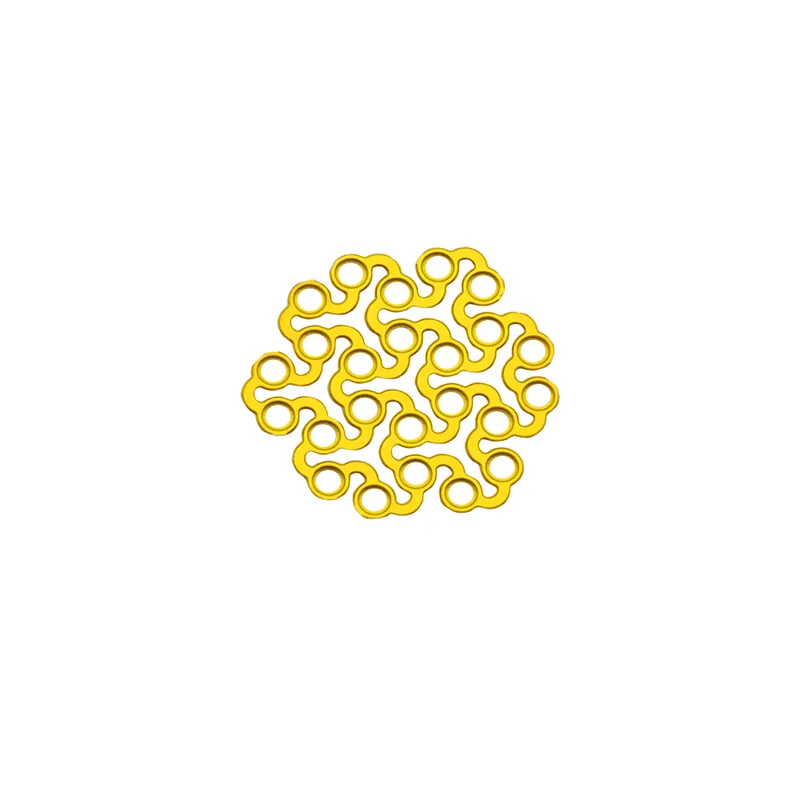Maxillofacial Minimally Interlink Plate: A Revolutionary Technique in Jaw Surgery
The use of plates and screws has become an integral part of maxillofacial surgery, especially in cases of fractures and deformities of the jaw. Conventionally, these plates were bulky and required a considerable amount of space to fit in. However, with the advent of the Maxillofacial Minimally Interlink Plate (MMI), jaw surgery has undergone a revolutionary change. In this article, we will explore the various aspects of the MMI, including its structure, advantages, disadvantages, and clinical applications.
Introduction
The Maxillofacial Minimally Interlink Plate (MMI) is a relatively new innovation in maxillofacial surgery that has the potential to revolutionize the way we treat jaw fractures and deformities. Unlike traditional plates, which require a considerable amount of space to fit in, the MMI is designed to be compact and easy to install. The device is made up of a series of interlocking segments, which can be assembled and customized to fit the specific needs of each patient.
Structure of MMI
The MMI is made up of a series of interconnected segments that can be adjusted and customized to fit the specific needs of each patient. Each segment is made up of two main components: a locking mechanism and a connecting rod. The locking mechanism consists of a small ball that fits into a socket on the adjacent segment. When the ball is pressed into the socket, it creates a secure, stable connection between the two segments. The connecting rod serves as a bridge between the segments, providing stability and support to the fractured or deformed jaw.
Advantages of MMI
The MMI offers several advantages over traditional plates, including:
Compact Design: The MMI is designed to be compact and easy to install, making it an ideal choice for patients with limited space in their jaw.
Customizable: The interlocking segments of the MMI can be adjusted and customized to fit the specific needs of each patient, providing a more personalized approach to treatment.
Stable: The interlocking segments of the MMI create a stable, secure connection that helps to prevent movement and displacement of the fractured or deformed jaw.
Minimally Invasive: The MMI can be installed using minimally invasive techniques, which means less trauma and faster recovery times for the patient.
Disadvantages of MMI
While the MMI offers several advantages, it also has some potential disadvantages, including:
Limited Range of Motion: The interlocking segments of the MMI may limit the range of motion of the jaw, which could be a concern for some patients.
Difficulty with Removal: The interlocking segments of the MMI can be difficult to remove, which could be a concern if the device needs to be removed at a later date.
Clinical Applications of MMI
The MMI is a versatile device that can be used in a variety of clinical applications, including:
Jaw Fractures: The MMI can be used to treat jaw fractures, providing stability and support to the fractured bone.
Deformities: The MMI can also be used to treat jaw deformities, such as an overbite or underbite.
Orthognathic Surgery: The MMI can be used in conjunction with orthognathic surgery to correct more complex jaw deformities.
Conclusion
The Maxillofacial Minimally Interlink Plate (MMI) is a revolutionary new device in maxillofacial surgery that has the potential to change the way we treat jaw fractures and deformities. The MMI offers several advantages over traditional plates, including a compact design, customizability, stability, and minimally invasive installation. However, the device also has some potential disadvantages, such as a limited range of motion and difficulty with removal. Despite these potential drawbacks, the MMI has a wide range of clinical applications and can be used to treat a variety of jaw fractures and deformities.
FAQs
How does the MMI differ from traditional plates used in maxillofacial surgery?
Is the installation of the MMI a minimally invasive procedure?
Are there any potential complications associated with the use of the MMI?
Can the MMI be used to treat complex jaw deformities?
How long does it take to install the MMI?
English
Français
Русский
Español
العربية
Português
Deutsch
italiano
日本語
한국어
Nederlands
Tiếng Việt
ไทย
Polski
Türkçe
አማርኛ
ພາສາລາວ
ភាសាខ្មែរ
Bahasa Melayu
ဗမာစာ
தமிழ்
Filipino
Bahasa Indonesia
magyar
Română
Čeština
Монгол
қазақ
Српски
हिन्दी
فارسی
Kiswahili
Slovenčina
Slovenščina
Norsk
Svenska
українська
Ελληνικά
Suomi
Հայերեն
עברית
Latine
Dansk
اردو
Shqip
বাংলা
Hrvatski
Afrikaans
Gaeilge
Eesti keel
Māori
नेपाली
Oʻzbekcha
latviešu
অসমীয়া
Aymara
Azərbaycan dili
Bamanankan
Euskara
Беларуская мова
भोजपुरी
Bosanski
Български
Català
Cebuano
Corsu
ދިވެހި
डोग्रिड ने दी
Esperanto
Eʋegbe
Frysk
Galego
ქართული
guarani
ગુજરાતી
Kreyòl ayisyen
Hausa
ʻŌlelo Hawaiʻi
Hmoob
íslenska
Igbo
Ilocano
Basa Jawa
ಕನ್ನಡ
Kinyarwanda
गोंगेन हें नांव
Krio we dɛn kɔl Krio
Kurdî
Kurdî
Кыргызча
Lingala
Lietuvių
Oluganda
Lëtzebuergesch
Македонски
मैथिली
Malagasy
മലയാളം
Malti
मराठी
ꯃꯦꯇꯥꯏ (ꯃꯅꯤꯄꯨꯔꯤ) ꯴.
Mizo tawng
Chichewa
ଓଡ଼ିଆ
Afaan Oromoo
پښتو
ਪੰਜਾਬੀ
Runasimi
Gagana Samoa
संस्कृत
Gaelo Albannach
Sepeti
Sesotho
chiShona
سنڌي
Soomaali
Basa Sunda
Wikang Tagalog
Тоҷикӣ
Татарча
తెలుగు
ትግንያውያን
Xitsonga
Türkmençe
संस्कृत
ئۇيغۇرچە
Cymraeg
isiXhosa
ייִדיש
Yorùbá
isiZulu



















